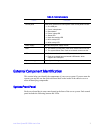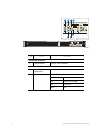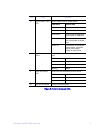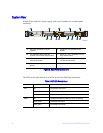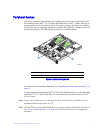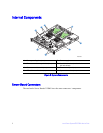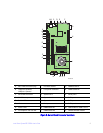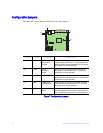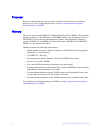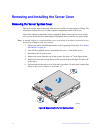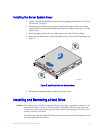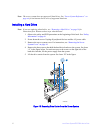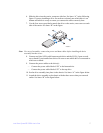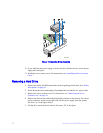Intel
®
Server System SR1520ML User’s Guide 11
SATA RAID Support
The Intel
®
Server System SR1520ML provides SATA (3.0 Gb/s) support.The embedded
SATA controller embedded supports both 1.5 and 3.0 Gbps data transfer rates. The Intel
®
RAID Technology solution, available with the ICH9R, offers data striping for higher
performance (RAID Level 0) and mirroring for higher reliability (RAID Level 1).
The BIOS Setup utility provides multiple drive configuration options on the Advanced |
ATA Controller setup page, some of which affect the ability to configure RAID. The
“Onboard SATA Controller” option is enabled by default. When this option is enabled, the
“Configure SATA as” option can be set to either IDE, AHCI, or RAID.
For assistance in navigating through the F2 BIOS Setup utility, see the Intel
®
Server
Board X38ML Technical Product Specification.
For information about setting up RAID, see the RAID Software Guide that is included on
the Intel
®
Server Deployment Toolkit 2.0 CD.
Rack and Cabinet Mounting
The server system can be mounted into a 19-inch wide by up to a 30-inch deep server
cabinet. The system ships with a basic slide rail kit and supports optionsl fixed-mount and
tool-less slide rail kits:
• The basic slide rail kit mounts the system into a standard 19-inch wide by up to 30-
inch deep EIA-310D-compatible server cabinet. The product order code is
AXXBASICRAIL. This kit is included with your server system.
• A fixed mount relay rack / cabinet mount kit can be configured to mount the system
into either a 2-post or 4-post rack cabinet. The product order code is
AXXBRACKETS. This kit is included with your server system.
• A tool-less full-extracting slide rail kit supports an optional cable management arm.
The product order code is AXXRACKCARM. This is an optional accessory that
must be ordered separately.
Hardware Requirements
To avoid integration difficulties and possible board damage, your system must meet the
requirements outlined below. For a list of qualified components, see the links under
"Server System References."



